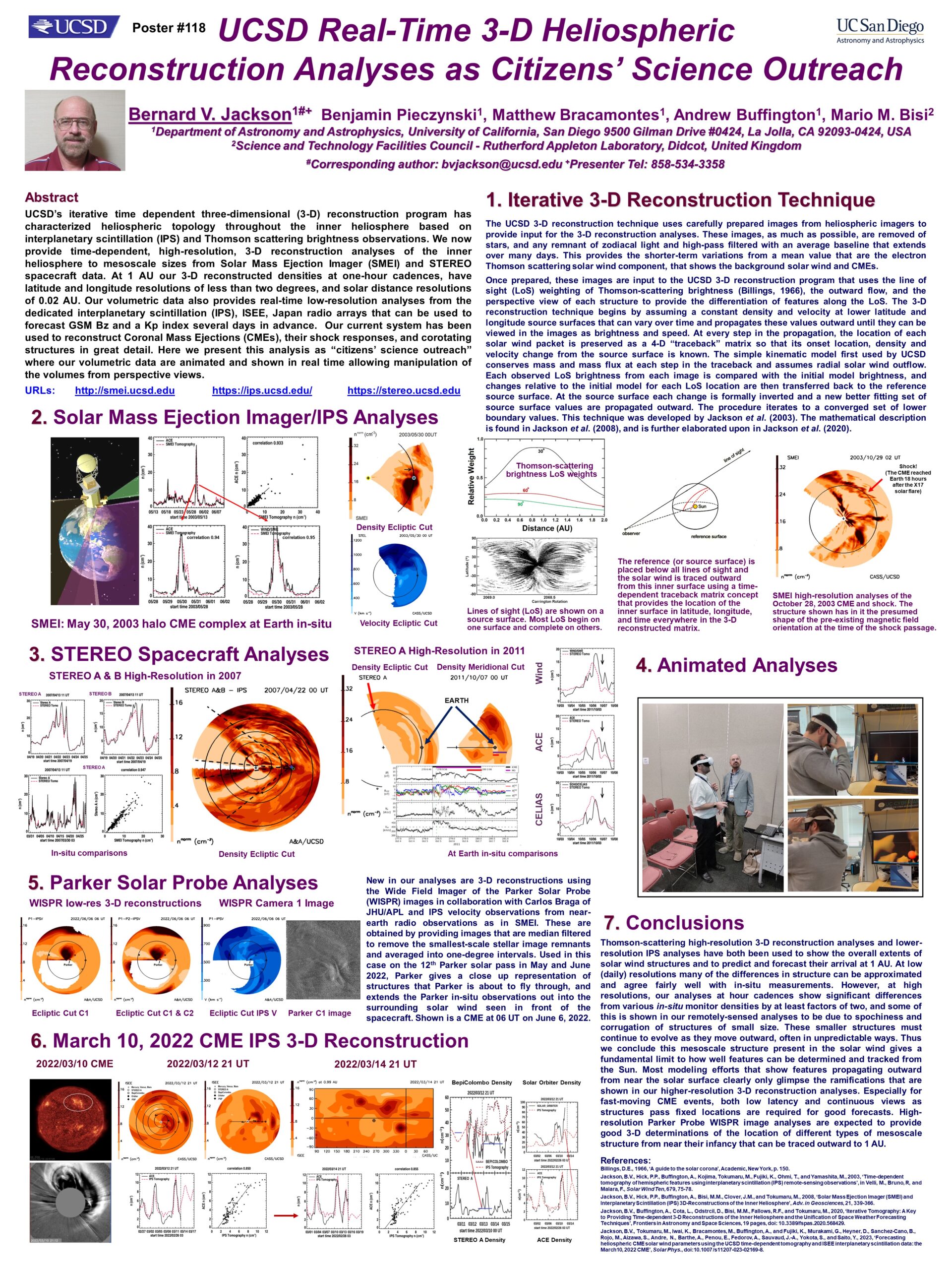Authors: Bernard V. Jackson (Department of Astronomy and Astrophysics, University of California, San Diego), Benjamin Pieczynski (Department of Astronomy and Astrophysics, University of California, San Diego),Matthew Bracamontes (Department of Astronomy and Astrophysics, University of California, San Diego), Andrew Buffington (Department of Astronomy and Astrophysics, University of California, San Diego), Mario M. Bisi (RAL Space, United Kingdom Research and Innovation – Science & Technology Facilities Council – Rutherford Appleton Laboratory, Harwell Campus, United Kingdom)
UCSD’s iterative time dependent three dimensional (3-D) reconstruction program has characterized heliospheric topology throughout the inner heliosphere based on interplanetary scintillation (IPS) and Thomson scattering brightness observations. We now provide time-dependent, high-resolution, 3-D reconstruction analyses of the inner heliosphere to mesoscale sizes from Solar Mass Ejection Imager (SMEI) and STEREO spacecraft data. At 1 AU our 3-D reconstructed densities at one-hour cadences, have latitude and longitude resolutions of less than two degrees, and solar distance resolutions of 0.02 AU. Our volumetric data also provides real time low resolution analyses from the dedicated interplanetary scintillation ISEE, Japan radio arrays that can be used to forecast GSM Bz and a Kp index several days in advance. Our current system has been used to reconstruct Coronal Mass Ejections (CMEs), their shock responses, and corotating structures in great detail. Here we present this analysis as “citizens’ science outreach” where our volumetric data are animated and shown in real time allowing manipulation of the volumes from perspective views.

